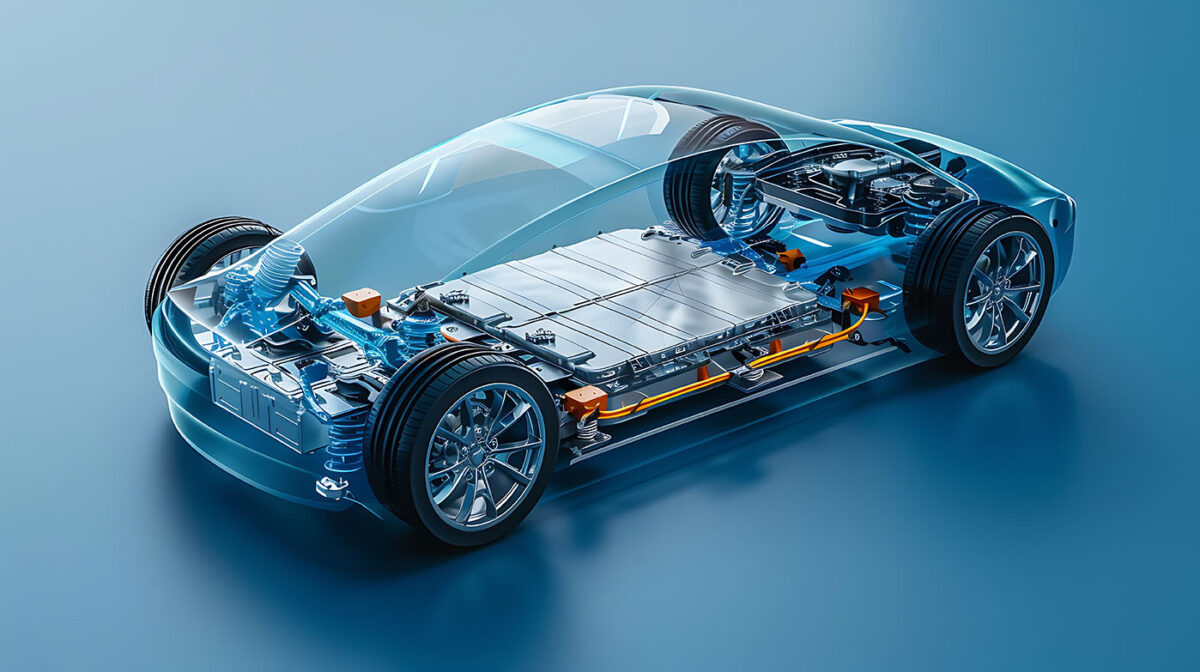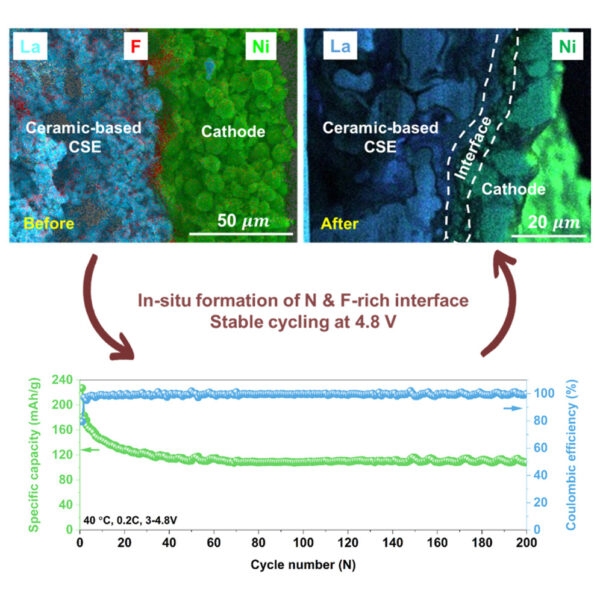Polymeric Interface Enhances Lithium-Batteries Efficiency

As the demand for electric vehicles (EVs) grows, efficient, safe, and long-lasting batteries become critical to meet energy and performance needs. Lithium-ion batteries (LIBs) power most EVs, but they face energy density, safety, and long-term reliability limitations.
Researchers introduced a breakthrough in garnet-based composite solid electrolytes (CSE), solving existing challenges. This innovation offers safer, more efficient all-solid-state lithium-metal batteries (ASSBs), which could revolutionize electric vehicle technology.
You can also read: Enhancing Safety in Lithium-Ion Battery Technology
Addressing Challenges with Lithium-Metal Anodes
Lithium-metal anodes have the potential to significantly increase battery energy density, which is crucial for improving electric vehicle range. However, organic liquid electrolytes used in conventional LIBs react with lithium-metal anodes, causing dangerous lithium dendrite formation. These needle-like dendrites can penetrate the battery separator, leading to short circuits and safety hazards, especially in EV applications. Therefore, the industry has sought safer alternatives for high-energy batteries.
Solid-state electrolytes (SEs) offer a promising solution, replacing liquid electrolytes with solid materials that prevent dendrite formation. However, ceramic SEs struggle with poor electrode contact, causing high interfacial impedance and reducing overall battery efficiency. Researchers developed a novel garnet-based composite solid electrolyte (CSE) to overcome these obstacles.
PVDF in Garnet-Based Composite Solid Electrolytes
The newly designed CSE combines a porous cubic Li6.1Al0.3La3Zr2O12 (LLZO) garnet framework with polyvinylidene difluoride (PVDF), forming a continuous 3D structure. This garnet framework enables fast lithium-ion (Li+) migration, while the PVDF enhances interfacial stability between the ceramic and polymer components. Strong chemical bonds between the two materials further stabilize the interface, reducing impedance and improving Li+ transfer. As a result, this innovation significantly improves the efficiency of lithium-metal batteries, making them more viable for electric vehicles.

The garnet-based CSE delivers impressive performance, especially in high-voltage lithium-metal batteries with PVDF. Courtesy of 4.8-V all-solid-state garnet-based lithium metal batteries with a stable interface.
High-Voltage Performance and Stability
The garnet-based CSE delivers exceptional performance, particularly in high-voltage lithium-metal batteries, which are vital for electric vehicles. When tested in TiO2-coated LiNi0.6Co0.2Mn0.2O2/ceramic-based CSE/Li batteries, the system cycled stably over 200 times from 3 to 4.8 volts. This stability is crucial for electric vehicles, where high energy density and reliable, long-term performance are required.
Additionally, the battery achieved high energy densities of 398.3 Wh/kg after 100 cycles and 376.1 Wh/kg after 200 cycles. These results surpass the US Advanced Battery Consortium’s target of 350 Wh/kg for advanced EV batteries. Therefore, by maintaining high energy efficiency across multiple cycles, this technology shows immense potential for improving EV battery performance.
Preventing Lithium Dendrite Formation for Safety
One of the most notable advantages of the garnet-based CSE is its ability to prevent lithium dendrite formation, enhancing battery safety. The LLZO garnet framework’s porous structure mechanically blocks dendrite growth, while the high ionic conductivity (0.437 mS/cm at 25°C) enables efficient Li+ transport. This capability is essential for developing high-energy ASSBs that balance both safety and performance, particularly in electric vehicles.
Advancing Electric Vehicle Efficiency
The garnet-based composite solid electrolyte represents a significant leap forward in developing safe, high-performance, all-solid-state lithium-metal batteries. By improving ionic conductivity, stabilizing the electrode-electrolyte interface, and preventing dendrite formation, this technology directly addresses challenges that hinder the next generation of EV batteries. In the long run, safer, more efficient batteries could extend EV range and enhance performance. As research progresses, the potential for these batteries to transform electric vehicle technology becomes increasingly clear, driving future innovations in sustainable transportation.
Read the complete article here.
